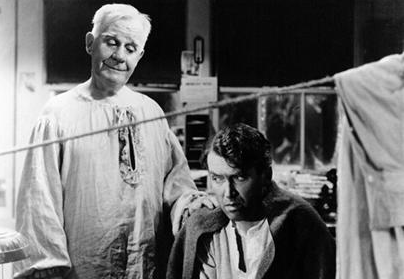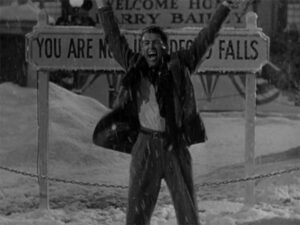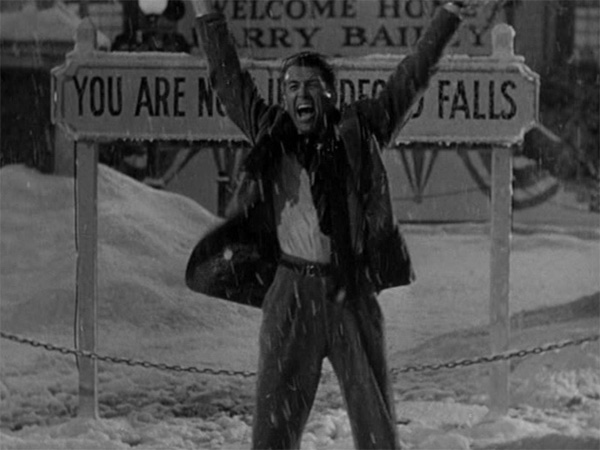
“Strange, isn’t it? Each man’s life touches so many other lives. When he isn’t around he leaves an awful hole, doesn’t he?” ~ Clarence, from It’s A Wonderful Life.
Just about all of us at some point have been touched by someone who altered the trajectory of our lives for the better. I’m sure you can probably think of such a person right now. Perhaps a teacher, a friend, or a parent extended that guiding hand, but many of us were never lucky enough to receive that nudge at just the right moment. My best friend growing up was a lot like the big creepy kid played by Adam Baldwin in the 1980 film, My Bodyguard. He had the size, the talent, the speed and the freak arm to make it to the NFL (he could chuck a football 80 yards accurately). What he didn’t have was a parent who knew that their kid was special, or a coach who noticed his shoulder had insane potential, it was sad.
For every great prospect that makes a career of playing Major League Baseball there are hundreds who fail in spite of remarkable skill sets. As Met fans we’ve had more than our share of promising talents who’ve crashed and burned. Fernando Martinez, Alex Escobar, Lastings Milledge, Shawn Abner, and an entire “Generation-K.”
It makes you wonder what separates MLB from sports where high draft picks are more or less sure things. You get a top 5 pick in the NFL and you are all but guaranteed an impact player. Why the difference? The learning curve is much steeper in baseball than in any other sport, and at it’s center is the act of hitting a small spherical object, that on any given pitch may sink, slide, curve, or even knuckle, at an ungodly variety of speeds. It’s not just a matter of reflexes, it’s a matter of recognition, prediction, memory, and intuition. Some figure it out, others never do.
While it’s not difficult to find athletes with the tools to succeed, it’s quite another story teaching kids how to play a game that gets ratcheted up to astonishing speed and difficulty at it’s highest level. It’s not enough to have the reaction time, you have to know when and how to react in a given situation, as baseball is easily the most situational of all sports. That, is the difference. It’s a thinking game where you have to know how your place on the field dictates any number of responses to an almost infinite number of possibilities, and you have to settle on the most likely and be prepared for them at a split second’s notice. Unrelenting preparation is essential to success. In light of this, I have always found the “good players make good coaches” argument absurd. It is absolutely the other way around.
The first time I saw Rube Walker, at our training camp in 1968, I was skeptical. I’d never met a pitching coach who hadn’t pitched himself. Rube had been a catcher, mostly with the Brooklyn Dodgers, behind Roy Campanella. But he quickly convinced me. He had spent his whole life studying pitchers.
Rube knew how to condition his pitchers, knew how to pace them and he treated them all as individuals. He never insisted that all of his pitchers use the same motion, the same style; he let them use whatever was best for them. He was, like Gil, always calm, always reasonable; he never got mad at anyone, except an umpire once in a while.
Tom Seaver, The Perfect Game.
Michael Lewis in 2008 was quoted by Paul Nyman of Hardball Times in Beyond Moneyball: Player Development, speculating that besides trying to evaluate players more effectively, predicting the health of pitchers’ arms might become a new means to “creating an unfair advantage.” I am all but certain that the current Met brain-trust has employed whatever faculties are at their disposal to identify “durability profiles,” with (so far) excellent results, but part of me feels like there is always the other side of the coin, what happens after you scout and draft the player?
When you think about it, with millions of dollars to throw around, it shouldn’t be too hard for any team to find 50 outstanding athletes a year from the earth’s population, and in truth it isn’t (you can probably find hundreds of outstanding young athletes in any major city). Teaching them to be outstanding ballplayers, however, is a different undertaking altogether. In a groundbreaking behavioral study The Role of Deliberate Practice in the Acquisition of Expert Performance, Ericsson, Krampe, and Tesch-Romer, hypothesize that,
“It does not follow from the rejection of innate limits on acquired performance that everyone can easily attain high levels of skill. Contemporary elite performers have overcome a number of constraints. They have obtained early access to instructors, maintained high levels of deliberate practice throughout development, received continued parental and environmental support, and avoided disease and injury. When one considers in addition the prerequisite motivation necessary to engage in deliberate practice every day for years and decades, when most children and adolescents of similar ages engage in play and leisure, the real constraints on the acquisition of expert performance become apparent. The commitment to deliberate practice distinguishes the expert performer from the vast majority of children and adults who seem to have remarkable difficulty meeting the much lower demands on practice in schools, adult education, and in physical exercise programs.”
They conclude with,
“In most domains of expertise, individuals begin in their childhood a regimen of effortful activities (deliberate practice) designed to optimize improvement. Individual differences, even among elite performers, are closely related to assessed amounts of deliberate practice. Many characteristics once believed to reflect innate talent are actually the result of intense practice extended for a minimum of 10 years.”
So according to the Theory of Deliberate Practice, expert performance is a function of exposure to an environment that is conducive to years and years of purposeful repetition, and that this is in fact remarkably difficult for most adults (let alone children) to maintain without interruption, thus the relative paucity of true prodigies. The theory essentially illustrates the precursors of excellence and concludes that what makes, say a violinist, truly exceptional, is the predilection to amass years upon years of practice. It seems simple but it isn’t. Both Tom Seaver and David Wright were stars as children, as were a great many exceptional major leaguers. They matured in environments where learning how to position yourself with a left-handed batter up against a right-handed pitcher with men on first and third became second nature. Mike Piazza, who was drafted in the 62nd and last round of the 1988 draft perhaps did not have some of the exceptional gifts of other prospects, but he did have the ability to stand in a batting cage for up to four hours at a time, until his hands bled.
What is clear is that there has to be a confluence between physical ability and instruction, but perhaps more importantly there must exist that rare predilection to endless mind-numbing repetition if you are to produce a truly exceptional performer. We’ve come to believe that many players are simply born with the “instincts” to succeed when this may not be the case at all, it is more likely that they have been doing it for so long, what seems “instinctual” to us is really a learned reflex to them. We describe that talent as “God given,” thus relegating an inordinate value to the draft, when in actuality, younger players with aptitude and playing time that have a high tolerance for deliberate practice are the most likely to eventually attain superlative abilities. Billy Beane himself was a “toolsy” outfielder who was the first to admit he didn’t have the drive and perseverance of less “talented” roommate Lenny Dykstra who ate slept and drank baseball.
The Mets, with less money in recent years, have been forced to employ an organizational model gleaned from smaller market operational norms. Teams like the Twins, are so good at churning out major league ready players they were recently able to restock their pitching ranks by trading off two outstanding young center fielders without even hesitating. Why? Because they know there is more where that came from. The remarkable thing about the Twins and their ability to develop players, is that even less gifted prospects invariably hit the majors prepared with the right “intangibles,” which as we previously noted is a function of learned experience, and a product of one of the best Player Development programs in Baseball — one that happens to be inexorably grounded in repetition. You need look no further than Ron Gardenhire’s hilariously understated befuddlement with our very own Carlos Gomez to understand the role of preparation in their system.
Met position player prospects in recent years seemed to reach the majors with loads of talent and yet lacked the intangibles, the little things. Under Omar Minaya we saw a glaring imbalance between some pretty damned good scouting and an ineffective Player Development system. Players struggled to take good routes in the outfield, missed cut-off men, didn’t seem to know when to take a pitch or why it’s probably not a good idea to high-five the entire front row of fans. In more recent drafts the Mets appear to be taking their chances with raw high school players for whom a strong Player Development system is even more integral to success. There was a story about one such player, Gavin Cecchini, how at one point the lactic acid build-up in his legs reached dangerous and chronic levels because of the amount of exercise he was engaging in — he’d get up at night when his parents were asleep and pull 8 foot train-ties attached to a rope back and forth across a field near his house. As a result a doctor prescribed several months of zero activity. This is the predilection towards deliberate practice the study above speaks to. It is what makes players seem like they possess a gift for being in the right place at the right time, when it is in fact learned by means of extraordinary commitment and repetition. The other part of the equation, however, is having the right instructors in place. If your going to draft a bunch of zoned-in single minded maniacs, you’ve got to have coaches who know how to tap their instincts and their innate motivation.
Rube Walker was never an expert pitcher – in fact he was never a pitcher at all — but he was a great instructor. Patient and soft-spoken, he was able to coax and guide individuals with differing abilities and personalities towards a common end. The perception that he might have been weak on mechanics as an ex-catcher by most accounts was inaccurate. He had a knack for finding flaws in a delivery and was a stickler on conditioning, but his real strength was honing an effective mental approach to taking the mound. He was, by all accounts, an extraordinary pitching coach, a “pitcher’s pitching coach” as Seaver described him.
I’m convinced that within this Met organization (as is probably the case with most teams) there exist the elements of a championship run, untapped, unrealized, under-appreciated perhaps, but present nevertheless. Without the right teachers, all the potential in the world remains just that, untapped. It was refreshing to hear Collins go on about preparation and “muscle memory” when he first hit the scene, and it became clear that developmental standards would be instituted system wide. It is certainly reassuring that Manager Ryan Ellis and Pitching Coach Phill Regan return to St. Lucie after taking their team to the league championship series with an 83 – 52 record and a league best ERA. If there is hope in a Met resurgence, the heart of it is in St. Lucie and a development apparatus able to successfully adapt a group of young heart-and-soul grinders to a ridiculously steep learning curve. Players who find ways to win with or without inordinate “God-given” talent — holdovers from the previous regime’s drafts like Daniel Muno and Darrel Cecilliani who by all accounts appear to be textbook examples of hard workers who are uniquely predisposed towards models of Deliberate Practice. It also can’t hurt that an already outstanding pitching staff will be joined by a kid named Syndergaard. Things do appear to be looking up in St Lucie. It is immensely encouraging to me, that at the other end of what is looking like a uniformly administered minor league continuum, their AAA affiliate is being run by the embodiment of leaving it all on the field, Mr. Walter Wayne Backman himself.
Those of us who aren’t privy to the Met inner circle can’t be certain what the guiding principles of the Met Player Development system really are, but judging from their focus in recent drafts we can extrapolate an emphasis on position player selections of a particular sort — raw, athletic, motivated, balls-to-the-wall types. If we can turn even a few of them into thoroughly prepared major-leaguers-in-the-making attaching them at every level to an assortment of durable and overpowering pitching staffs, well, I’d say we might just have a formula for sustained success and a minor league system capable of successfully augmenting the major league roster.















